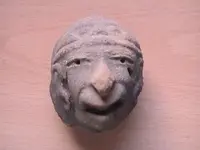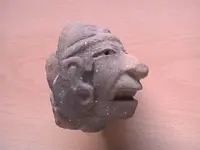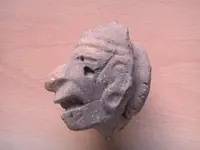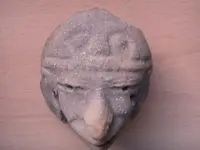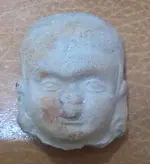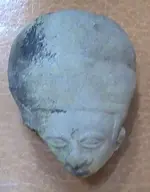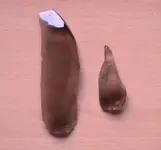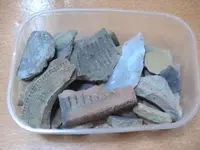HISPAN
Gold Member
- Joined
- Mar 15, 2009
- Messages
- 5,160
- Reaction score
- 605
- Golden Thread
- 0
- Detector(s) used
- WHITES MXT ,GARRET ACE150,GARRET SEA HUNT MARK II.
- Primary Interest:
- Metal Detecting
- #1
Thread Owner
Hi Friends ! 
As I said, I am a collector of Art PreColumbian and I will show a piece of my collection.Today Head a terra-cotta Warrior Manteño :
Manteño ceramics are recognized because they are usually black. This distinctive color is the result of burning the ceramics in a low oxygen environment, called a reducing environment, resulting in a mass of black carbon in the vessel. Manteño ceramics tend to be polished to a high sheen by giving them a beautiful black sheen. Common types include ceramic pots with faces Manteño model added to the necks of the vessel . (In this case a warrior) ... Many of the faces are human, while others are animals such as foxes. . Manteño culture is known from the southern and central coastal region of Ecuador and was greatly influenced by Mayan culture and commercial ties, is a late prehistoric culture dating from about 700 AD until the Spanish arrived in late 1520. Manteño culture was engaged in extensive trade over large distances to the south and north along the Pacific coast. They used large rafts manufactured from balsa wood to transport and market their goods. In one of the first expeditions of Francisco Pizarro to explore along the coast of Ecuador, the Spanish captured a large raft, loaded with goods for trade that is believed to belong to Manteño.

As I said, I am a collector of Art PreColumbian and I will show a piece of my collection.Today Head a terra-cotta Warrior Manteño :
Manteño ceramics are recognized because they are usually black. This distinctive color is the result of burning the ceramics in a low oxygen environment, called a reducing environment, resulting in a mass of black carbon in the vessel. Manteño ceramics tend to be polished to a high sheen by giving them a beautiful black sheen. Common types include ceramic pots with faces Manteño model added to the necks of the vessel . (In this case a warrior) ... Many of the faces are human, while others are animals such as foxes. . Manteño culture is known from the southern and central coastal region of Ecuador and was greatly influenced by Mayan culture and commercial ties, is a late prehistoric culture dating from about 700 AD until the Spanish arrived in late 1520. Manteño culture was engaged in extensive trade over large distances to the south and north along the Pacific coast. They used large rafts manufactured from balsa wood to transport and market their goods. In one of the first expeditions of Francisco Pizarro to explore along the coast of Ecuador, the Spanish captured a large raft, loaded with goods for trade that is believed to belong to Manteño.



